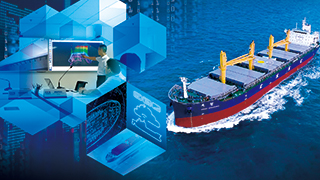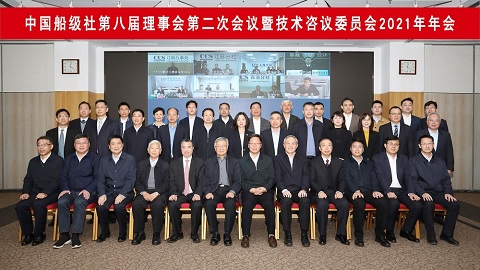At present, with the continuous deepening of global energy transformation, the shipping industry is ushering in a new era characterized by green, low-carbon, and sustainable development.

At
present, with the continuous deepening of global energy transformation, the
shipping industry is ushering in a new era characterized by green, low-carbon,
and sustainable development. In this context, ammonia-fuelled ship is gradually
becoming a new star in the shipping industry by virtue of its unique
environmental protection advantages and development potential.
The International Energy Agency (IEA) has
predicted in its updated "Net Zero Roadmap" for 2023 that ammonia
fuel will play a key role in the decarbonization of the global shipping
industry. By 2050, international shipping activities will more than double, the
share of ammonia in final energy consumption will increase from 0% in 2022 to
44% in 2050, with biofuels and hydrogen fuels each accounting for 19%, while
the highly-anticipated methanol will only account for 3%. According to the
research findings of the Environmental Change Institute (ECI) of the Oxford
University, ammonia fuel may be a feasible option to facilitate the
decarbonization of international shipping industry by 2050. The green ammonia
can meet over 60% of the global shipping fuel demand by targeting just the top
ten regional bunkering ports.
Nowadays, countries around the world are
accelerating the exploration of "new solutions" for clean energy, and
intensifying the planning and deployment of the ammonia fuel industry, and
ammonia fuel has entered an accelerated period of development.
In 2022, the National Development and Reform
Commission and the National Energy Administration of the People's Republic of
China jointly released the "Medium and Long-term Plan for the Development
of Hydrogen Energy Industry (2021-2035)" to actively promote the
demonstration project of ammonia-fuelled vessels; the United States Department
of Energy has made a macro planning for renewable energy, and focused on
developing more than ten green ammonia projects to promote the rapid
development of the green ammonia industry in the commercial sector; at the
fourth EU hydrogen energy network conference, it was proposed to increase the
production of green ammonia and make it one of the trading systems for hydrogen
energy. Currently, it is carrying out the research on the synthesis of green
ammonia from green hydrogen, and making engineering demonstration of green
ammonia in the transportation and industrial fields; Japan has developed
rapidly in ammonia co-combustion technology, proposed the "ammonia
economy", and planned to achieve "pure ammonia power generation"
by 2050, and complete the demonstration of pure ammonia-fueled vessels by 2025,
and promote their application after 2025; South Korea has taken 2022 as the
"First Year of Ammonia Power Generation", and planned to
commercialize ammonia fuel power generation from 2030; Australia has fully
utilized "photovoltaic hydrogen production technology" to produce
green hydrogen for synthetic ammonia, and also vigorously expanded ammonia
energy trade to transport ammonia to South Korea and Japan by sea; Saudi Arabia
has announced a $5 billion investment to build a 4MW green ammonia plant, which
is expected to be put into operation by 2025 and export green ammonia globally.
In the shipping industry, faced with
significant opportunities in the trillion dollar marine fuel market, shipping
giants including COSCO SHIPPING, Maersk, CMA-CGM, Mediterranean Shipping
Company (MSC), Hapag-Lloyd, Ocean Network Express (ONE), Evergreen Marine, etc.
have got involved in the application of ammonia fuel to boost the rapid
development of ammonia-fuelled ships.
In recent years, as an important technical
support force to promote the safety, environmental protection, and sustainable
development of the global shipping, shipbuilding, and related industries, China
Classification Society (CCS) has been among the early movers to conduct
research on ammonia-fuelled vessels, and its research scope covers the key
links in the entire industry chain including ammonia fuel preparation,
transportation, water application, etc. CCS has also participated in multiple
R&D projects related to ammonia-fuelled vessels and demonstration
applications, and formulated the "Guidelines for Ships Using Ammonia
Fuel". Currently, CCS has established a comprehensive scientific research
and service system with respect to the establishment of rules and standards,
approval of ships and systems, risk analysis, carbon intensity assessment,
etc., playing a positive role in promoting the safe development of
ammonia-fuelled vessels and the application of clean energy on water.
Although ammonia-fuelled ship has broad
development prospects, there are still some challenges for its future
development, for example, multiple challenges may exist in the uptake by
international shipping, including cost, safety, infrastructure, regulatory
framework, technological maturity, market acceptance, etc. These challenges
need to be addressed through global cooperation, technological innovation,
policy support and investment, so as to achieve widespread application of
ammonia-fuelled vessels in the global shipping industry.
At this
point, CCS is willing to work together with the industry to promote the safety,
environmental protection, and sustainable development of ammonia-fuelled ships.
Note: If you need to reprint, please indicate the source of the information.













